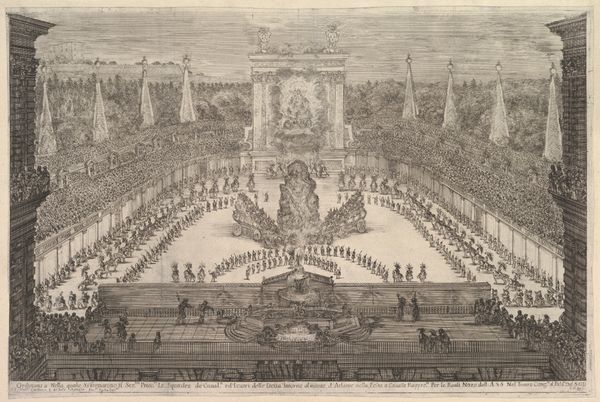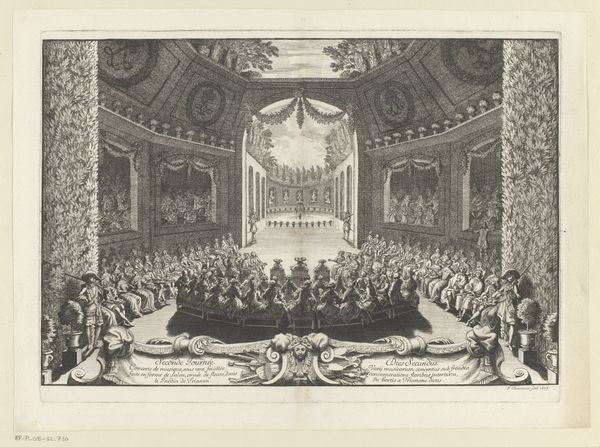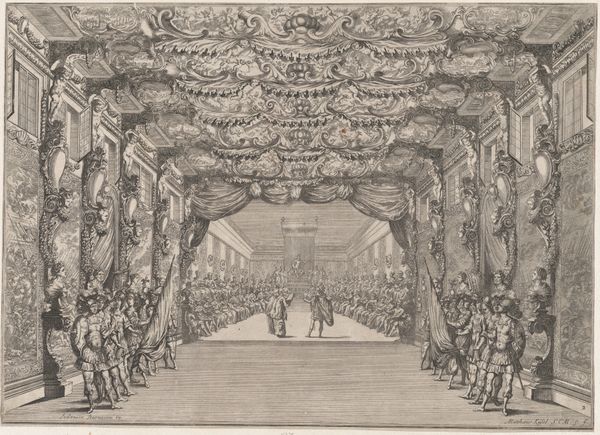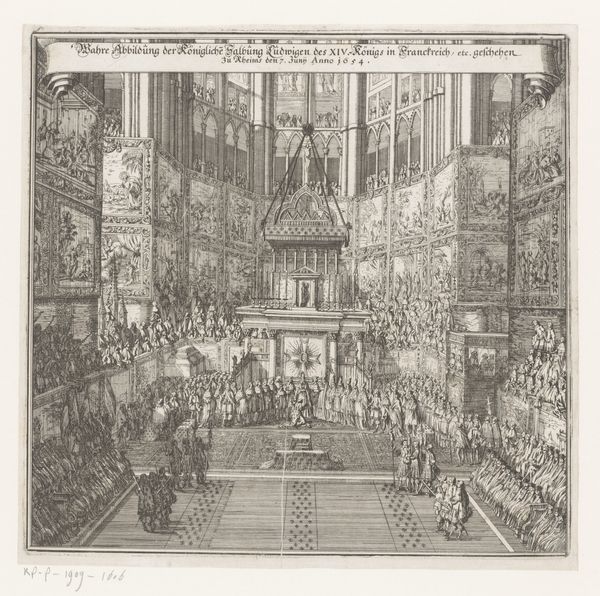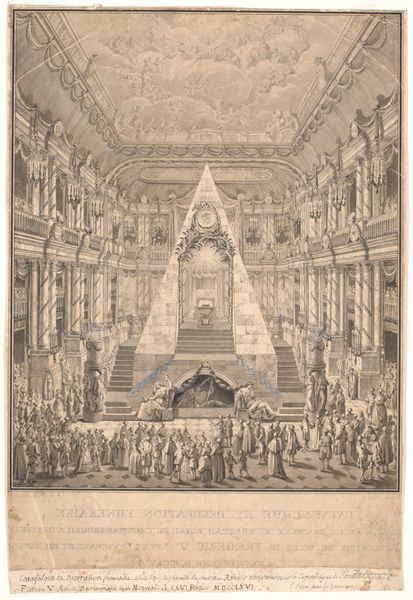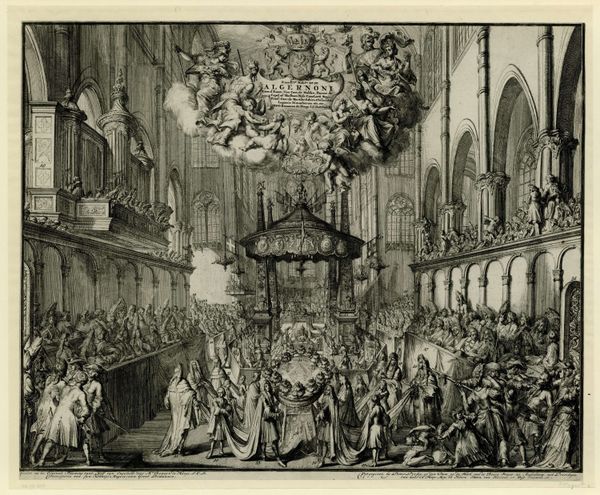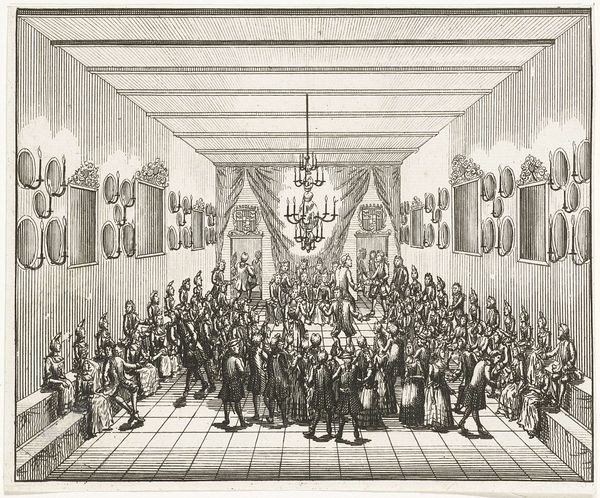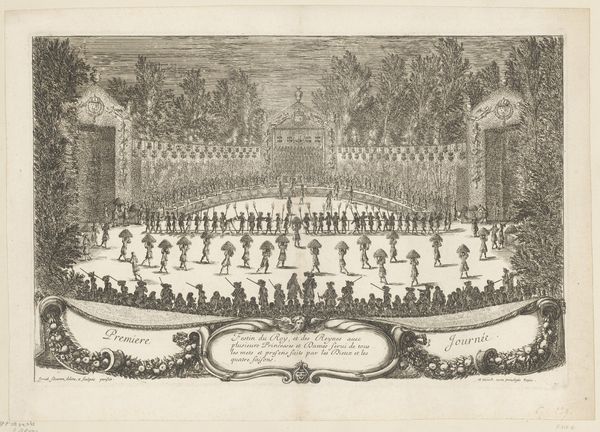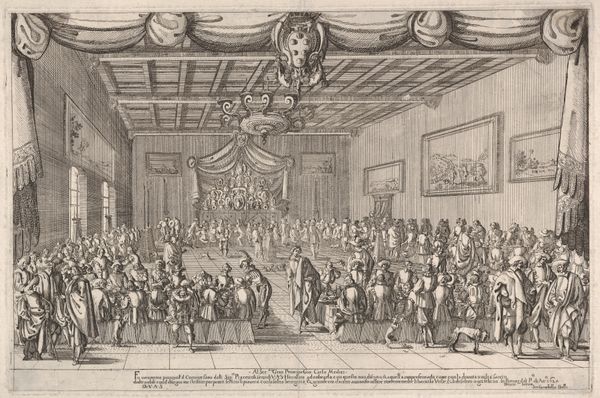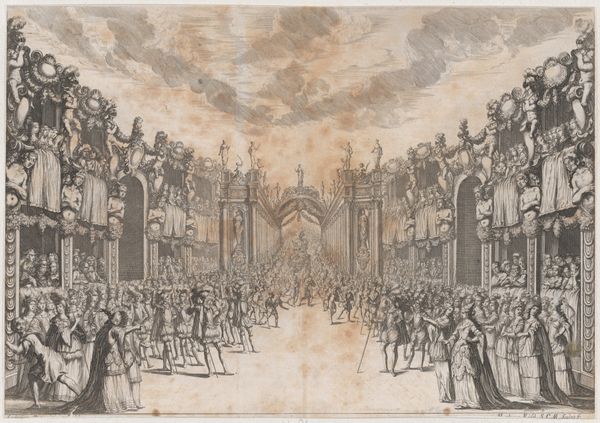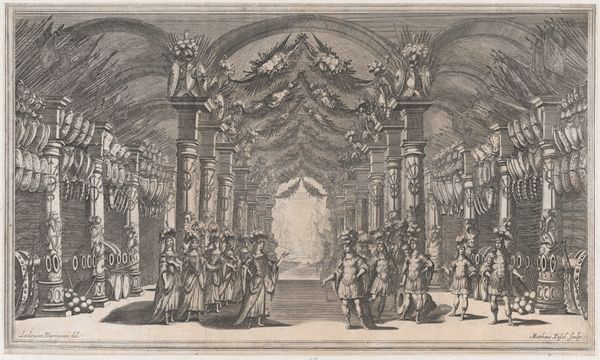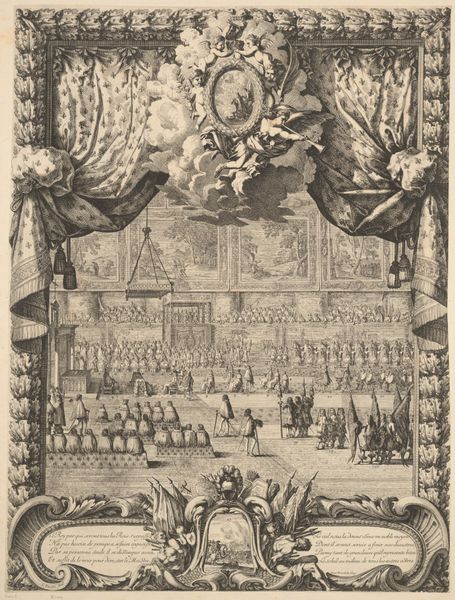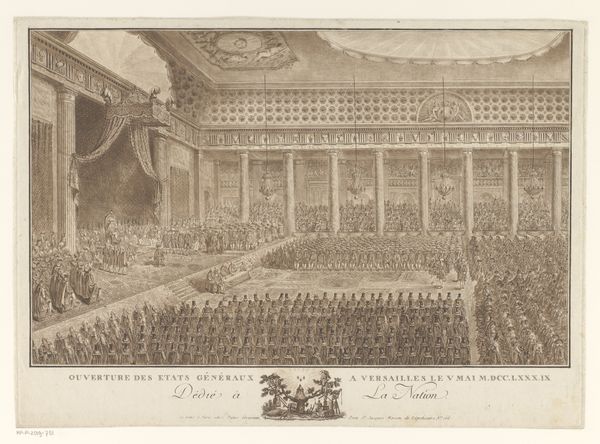
Coronation of Charles XI, Stockholm, December 20, 1672 1672
0:00
0:00
drawing, print, etching, engraving
#
drawing
#
baroque
# print
#
etching
#
etching
#
line
#
cityscape
#
history-painting
#
engraving
Dimensions: Sheet: 12 13/16 × 18 7/8 in. (32.6 × 48 cm)
Copyright: Public Domain
Curator: Let’s take a look at this detailed print entitled "Coronation of Charles XI, Stockholm, December 20, 1672," created by Georg Christoph Eimmart the Younger in 1672. It captures the opulence of a royal banquet following the coronation. Editor: Wow, the sheer volume of detail! It feels like peering into a Lilliputian world bustling with formally dressed figures. It’s grandiose, yet almost unsettlingly crowded. Curator: Absolutely. Eimmart's work, predominantly an etching with engraving touches, offers us a lens into the manufacturing of power during the Baroque era. Prints like these circulated widely, functioning as propaganda and visual records, mediating the spectacle of royal events for a broader audience. The use of line work—etching and engraving—would have facilitated mass production. Editor: Mass production of royalty... it seems strange, this flattening of the three-dimensional event into lines. Is that tiered centerpiece I spot, pure sugar artistry, ripe for critique of excessive consumption? Or, rather, of excessiveness more broadly? Curator: I appreciate that observation, and in regards to technique and access, consider how Eimmart’s line work here emphasizes clarity, functionality. Each figure is delineated; power dynamics made explicitly visible. There's very little shadow. Think of the labor involved: the creation of plates, the printing, the distribution, a network extending from royal patronage down to the printmaker's workshop. Editor: You’re right, thinking of it that way, it feels almost like a royal blueprint – or maybe more aptly, an inventory! So many goblets... so many hats! What would it mean for an image like this to fall into the 'wrong' hands – if a little line could undo all this pomp? Curator: Exactly. And to further consider social reach, these prints would not have been accessible for just anyone. What would the average citizen of the era have understood? And what would that representation incite? Editor: Thinking about the material conditions and considering distribution – seeing through the labor, social control... It all leaves me wondering about the real weight of an image, when ceremony flattens out into starkly crafted lines on paper. Curator: It transforms it. Makes power reproducible, but also maybe makes it manageable, even vulnerable. Editor: I see. This piece, once looked at in its historical setting, offers much more than a portrait of a coronation – the production is as complex as the event itself. Curator: Precisely. Thank you for walking me through this.
Comments
No comments
Be the first to comment and join the conversation on the ultimate creative platform.
